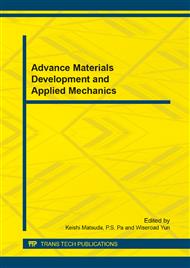p.365
p.372
p.376
p.380
p.384
p.388
p.393
p.397
p.401
The Application Research of Non-Nuclear Density Gauge Electromagnetic Technology in the Road Engineering
Abstract:
In order to ensure the control degree of compaction and meet the design requirements in the process of asphalt pavement construction, reduce the core detection for the damage in the late. It using non-nuclear density gauge to test density, and carries on the comparative analysis with the density of core test data or conversion degree of compaction data, then study the variation regularity of after the calibration for field dynamic control compaction with the roller compaction times, Conclusion non-nuclear density gauge control accuracy and error causes in the asphalt layer compaction testing. Experiment results show that non-nuclear density gauge must be proper calibration, which according to different structure layer, gradation type and different materials and core calibration method test values. At the same time suggest appropriate to increase the number of calibration for 10~15 points, which reduce error and test error for choosing, make its accuracy of control within 2%. The conversion relationship between detecting the density and the water method to testing compaction were emphatically studied, this provides a basis for non-nuclear density gauge effective application in the field compaction test grade road asphalt layer.
Info:
Periodical:
Pages:
384-387
Citation:
Online since:
July 2014
Authors:
Price:
Сopyright:
© 2014 Trans Tech Publications Ltd. All Rights Reserved
Share:
Citation:


